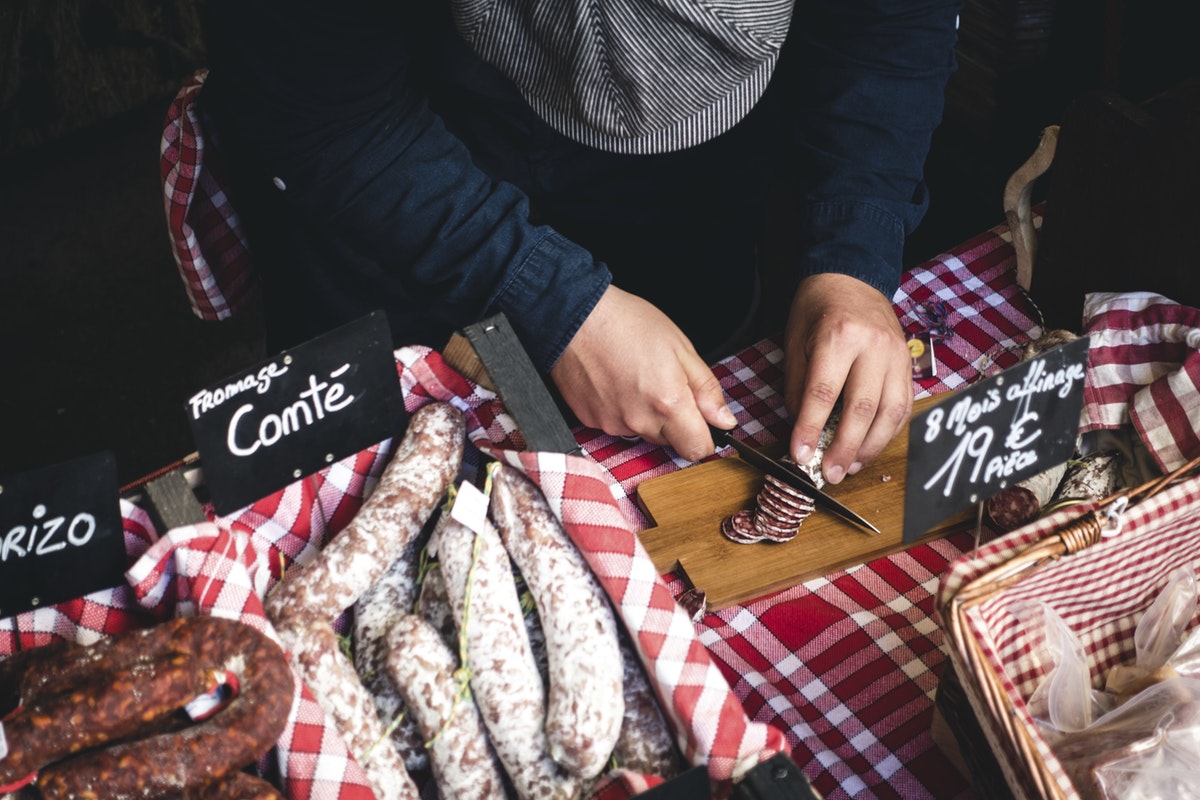
Dear students,
What better place than our Twinspace to create a fabulous European food festival? Get ready to walk down the alley and discover a Polish product. Turn a corner and you are in Croatia. Go futher down to see what Greece has to offer. Turn left and you'll be in Italy. keep going and you will be in France! What an adventure it is going to be!
I hope you all had fun preparing your presentations. Post them here so we can discover what food festival and typical ingredient you celebrate in your country. Of course, do not forget to post a small video to challenge us with questions about this product. Next month, each country will choose their peers from other countries who will send a small video with the answers. Isn't it a great way to practise speaking English? Do not stress over it though... it should be fun not stressful.
Let's share our culture through food and learn a bit more about each other.
I personally cannot wait to read your posts and listen to your questions.
David
CROATIA
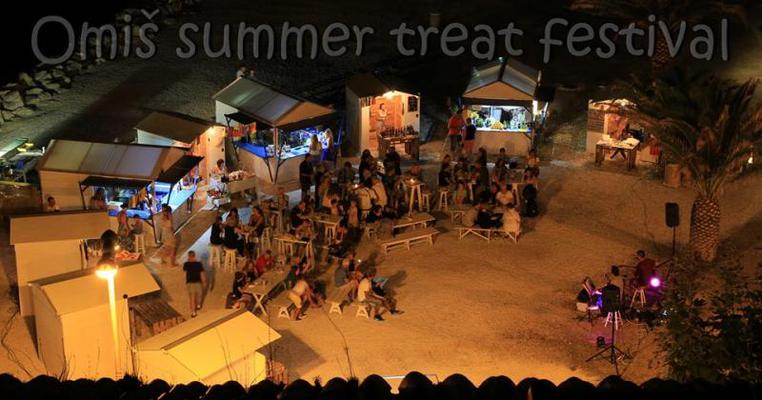
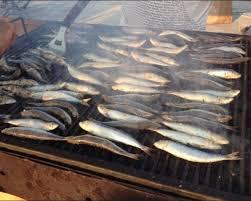
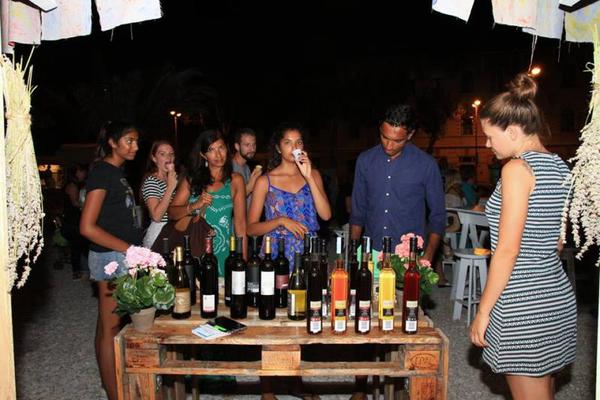
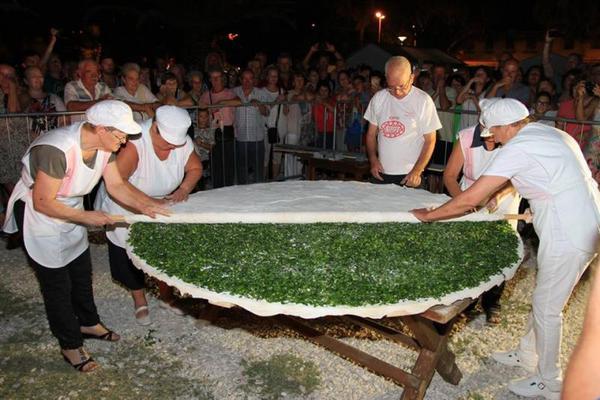
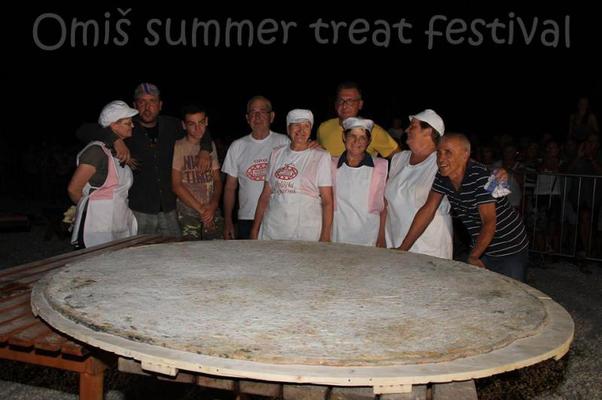
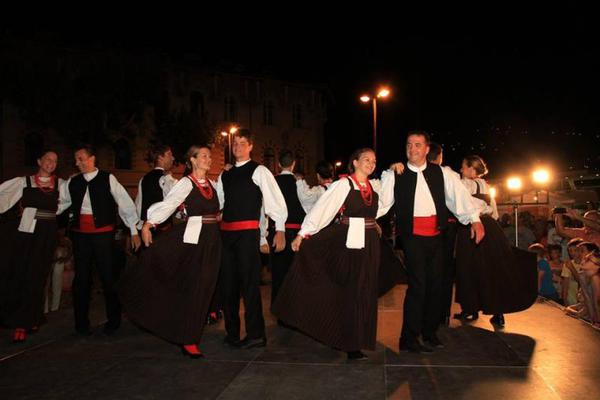

Could you find a slogan for our festival?? Write it here and don't forget to come back and vote for the best slogan! Thank you!
GREECE
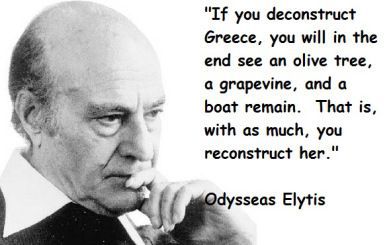
Although it's the time of year that we are harvesting olive trees, we would like to talk about the harvesting of vineyards and the production of wine.
Zisimos and Konstantina were with me at the Wine Festival of Vomvokou- a village near Nafpaktos, where the last five year there's a wine festival. A lot of people are coming every year to watch this representation, to dance and to taste grape products and good local wine, as well as tsipouro- a strong distilled spirit which is produced from the pomace (the residue of the wine press).Zisimos and Konstantina made a video with all the photos and videoclips they took this day...
"We invite you to watch it. The songs are all related to vineyards - "ampeli" in greek, and to grapes -"staphili" in greek. While students of the nearby schools are dancing you'll see people of the village carrying grapes in big baskets. There's a handmade machine that was used in old days for pressing grapes- it has a very big basket on the top where the grapes were putting and there's a man (sometimes a lot) that presses them with his feet to take their juice for the wine production." Zisimos and Konstantina.
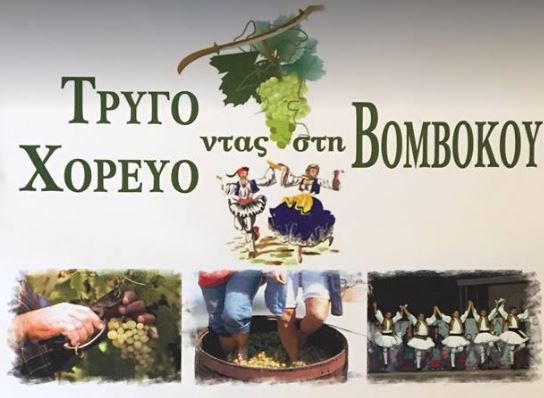
The wine for us, the Greeks, besides being included in the five basic elements of our diet along with water, salt, oil and cereals (or rather precisely it), was closely related to culture and to our religion.
Let's read what Poly and Nikos have found looking for the Greek's wine history....
"The heroes of Homer’s stories drank wine from kraters (large vases used to mix wine and water), Hesiod tells us the correct ratio of wine to water - one part wine to three parts water, Alcaeus and Anacreon praise wine in their lyric poems, Plato and Xenophon discuss wine in their Symposiums, and Athenaeus refers to the wines of antiquity by name.
It was only natural that the country which worshipped Dionysus would elevate wine, Dionysus’s gift to mankind, into an art. The way the farmer cared for his vines, the production of wine and the way it was drunk, were all art forms, as were the condemnation of drunkenness, the giving of wine as a religious offering and the Bacchanalian poetry which written about wine and wine-drinking. The traditions associated with Dionysus continued unabated into Hellenistic and Roman times. In any case, as well as being used in worship and drunk for pleasure, the wine was also used as medicine and as an antiseptic and, most importantly, a purifying agent for water.
In Byzantium, Dionysus was replaced by the new God, who, however, inherited all the Dionysian symbols. Christ became the vine, and wine formed a link between Greek tradition and the Bible. To see how important is this for our religion we have to mention that the Christian Eucharist contains bread and wine- a meal specifically connected with the Passover meal of the Jewish Messiah and his disciples. There Christ took the bread and the wine and ordered his disciples to eat and drink it as his own Body and Blood. In the 13th century, as the Saint of the vine and wine was established Agios Tryfonas, who is honored on the 1st of February at the time of pruning the vineyards."
Lamprini mentioned that:
"The history of modern Greek wine production and the development of bottled wine in Greece begins in the last fifty years, in the 1960s. At that time, the first serious investments in machinery and equipment began to take place, resulting in the spectacular improvement of Greek wines in terms of technology. At the same time, a partial reconstruction of vineyards by the planting of fine quality vine varieties is carried out on the basis of evaluations carried out by the Institute of Wine, and since the first decade the regions for the production of Wines of Origin have been institutionalized by the Ministry of Agriculture."
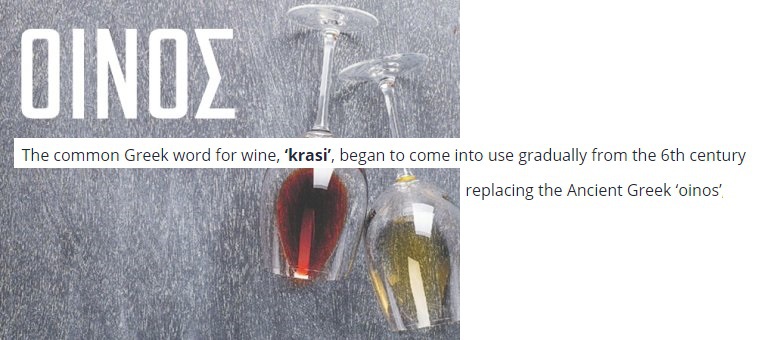
Kostas gives us some more info about nowadays....
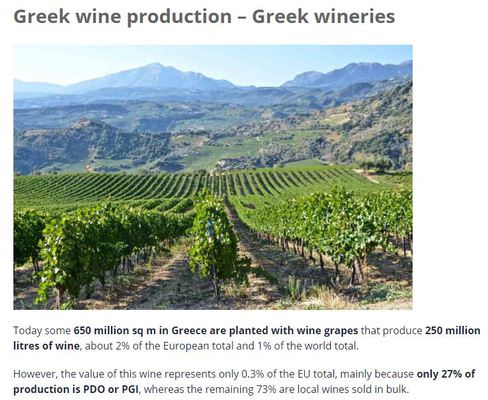
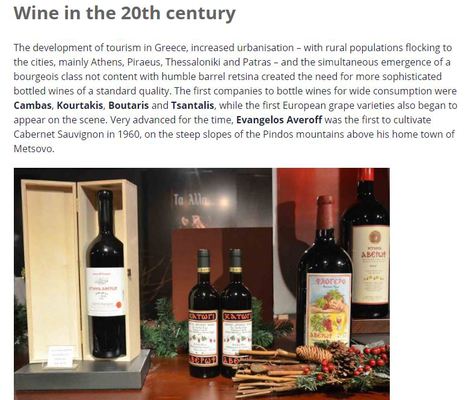
In the following map, all the students worked in order to show you Greek wine varieties and the places that they are mostly produced. Every student had to find info for a specific variety and to tag it on the map. Although you'll see some wine varieties in specific areas, this doesn't mean that you can't produce them in the rest of Greece.
But it's not only the wine that is produced by grapes...Let's visit postermywall to see what Chrysoula, Anastasia, Anta, and Katerina have made..
Could you find a slogan for our festival?? Write it here and don't forget to come back and vote for the best slogan! Thank you!
Poland (Goleniów)
Every year a different village is responsible for hosting the harvest feast. Each of the houses prepares decorations made of straw. They present farmers, farm machines or animals. They can be witty, ingenious and really spectacular. The photos in the presentation below were taken in three different villages (years from 2012-2016) in our neighbourhood.
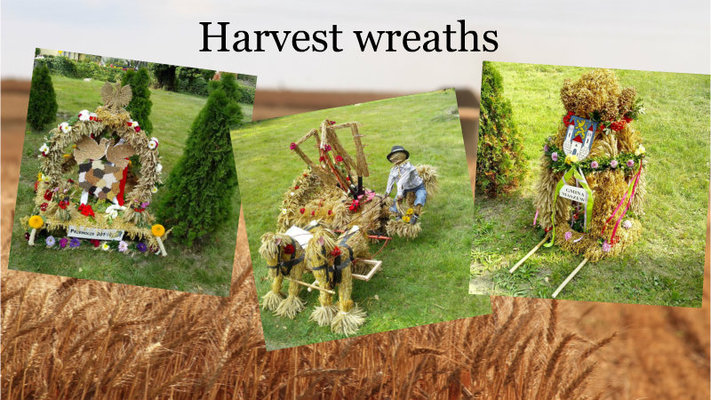
During every harvest feast there is a competition for the best harvest wreath. Each of the villages from the commune prepares an original wreath. It must be made of various elements - various types of corn are necessary, plus also dried flowers, fruit and vegetables. A motive of crown and cross (representing Christianity) or eagle (Polish national symbol) appear quite often. The wreaths are graded by a jury and the best ones get a financial prize.
There is a great film on youtube showing how harvest wreaths are made in Poland. Although it's in Polish, I hope you will enjoy watching these beautiful works of art.
Could you find a slogan for our festival?? Write it here and don't forget to come back and vote for the best slogan! Thank you!
Poland (Limanowa)
Kraków Honey Harvest is held each year in September. We joined in the fun. You can use full screen mode to watch it.
Lesser Poland Voivodeship is known for its rich apicultural traditions. 8 types of honey from this region have been included in the List of Traditional Products maintained by the Ministry of Agriculture and Rural Development: honeydew honey of Nowy Sącz, honeydew honey of Małopolska, pine honey of Sucha Beskidzka, forest mixed flower honey of Podksięże, goldenrod honey of the Skrzyszów commune, fir honey of Rożnowskie Foothills, fir honey of Beskisd Wyspowy (the Island Beskids).
Would you like to taste wild honey made by wild bees? It is so thick that you can chew it like chewing gum.The old tradition of wild bee-keeping (in forests) is being restored in Poland because the honeybee is becoming an endangered species.
There are a group of enthusiastic beekeepers from Belarus, and Poland who are preparing file on forest beekeeping for UNESCO Heritage List.The work on the file was launched in 2017. The decision to inscribe Forest Beekeeping of Belarus and Poland onto the UNESCO Intangible Heritage List will be taken in 2019.
They say that urban beekeeping and reintroducing the tradition of wild-bee keeping (keeping wild bees in forests ) seems one of the ways of saving bees from extinction.
If you are interested in wild-bee keeping, watch the Polish documentary film “Honey Hunters” directed by Krystian Matysek, the winner of Wildscreen Panda Awards in 2016. It is really worth watching.
Could you find a slogan for our festival?? Write it here and don't forget to come back and vote for the best slogan! Thank you!
Italy
FRANCE
Food festival in Gascony, Gers: Estiv'ail of Saint Clar
It takes place every Summer, in August. Saint Clar is the capital city of the white garlic. The condiment is celebrated: we cook it (Tourin for example), we make braids and original creations.
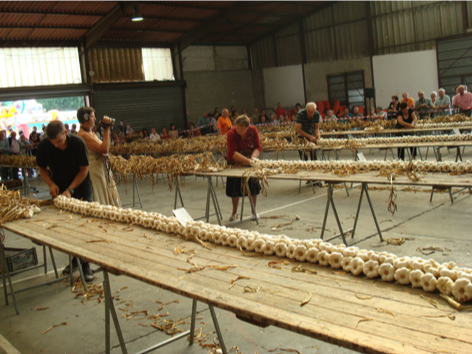
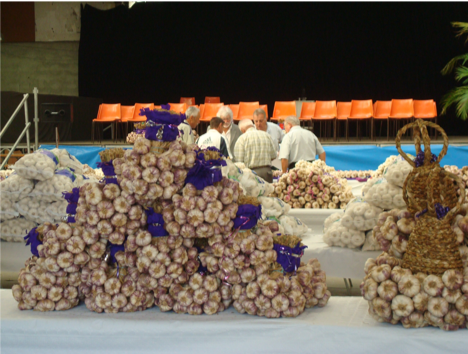
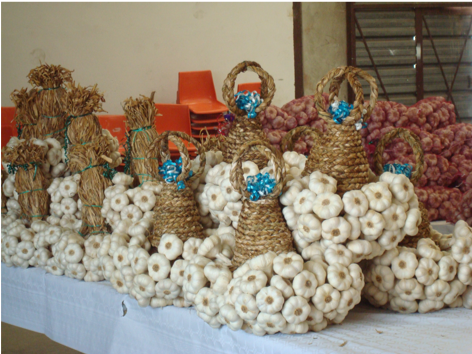
Look at some of creations made with garlic (pictures taken last August by Nino's mother):
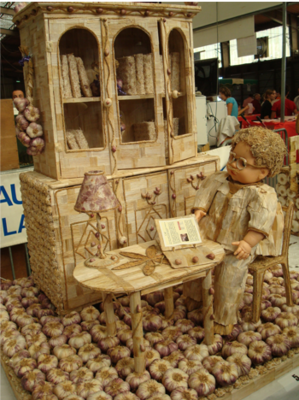
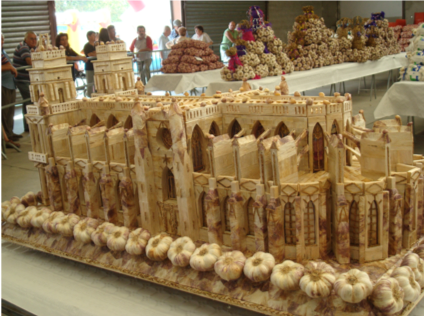
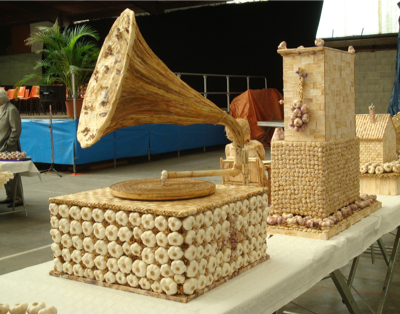
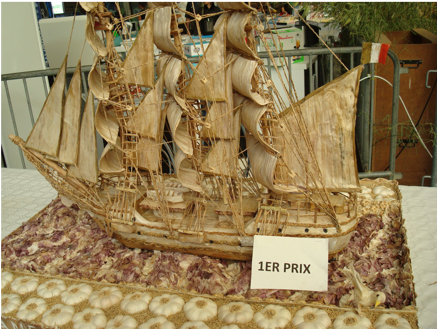

Funny food quotes!
Louis Diat (1885 – 1957), a French Chef and culinary writer said: «There are five elements: earth, air, fire, water and garlic». «Without garlic, I simply would not care to live».
What about you? Does your family use garlic when cooking?
Are you mad about one particular ingredient like Louis Diat?
Watch our short video for more questions in the Q&A VIDEOS section.
See more great photos below:
It's amazing what we can do with garlic!!!
These pictures were taken by our teacher's cousin in Mauvezin, a small town near our high school which also has a garlic food festival.
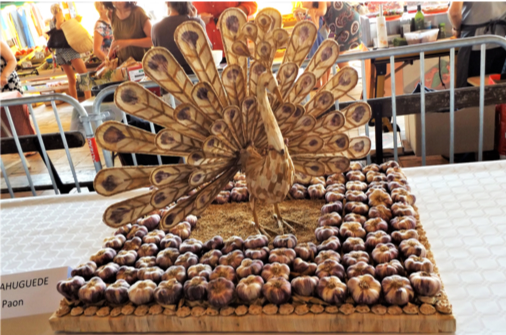
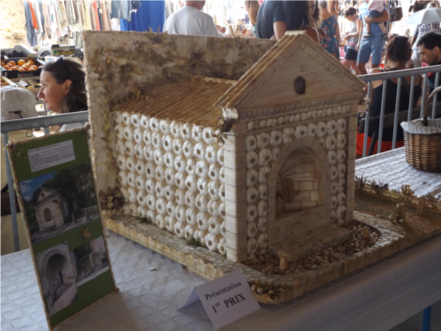
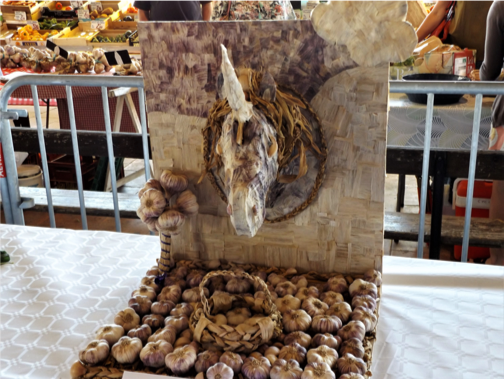
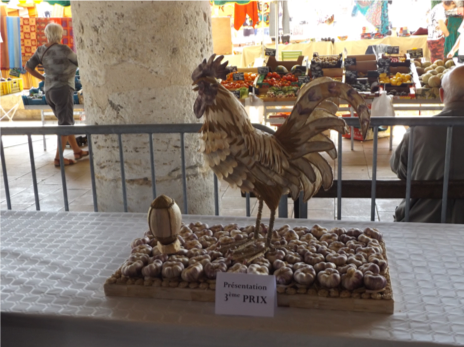
Could you find a slogan for our festival?? Write it here and don't forget to come back and vote for the best slogan! Thank you!